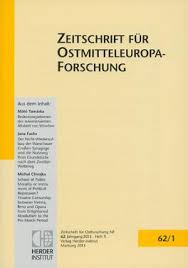Land Melioration in Belarusian Polesia as a Modernization Factor in the Soviet Periphery
Land Melioration in Belarusian Polesia as a Modernization Factor in the Soviet Periphery
Author(s): Artem KouidaSubject(s): Energy and Environmental Studies, Human Geography, Regional Geography, Rural and urban sociology, Environmental interactions
Published by: Verlag Herder-Institut
Keywords: Belarus’ Modernization; Soviet Periphery; Land Melioration; Polesia;
Summary/Abstract: For centuries, Southern Belarus was notorious in neighboring regions for its impassable marshland landscapes. In the course of historical and political reforms and reorganization, this outlying borderland experienced lively changes of rulership and government. All attempts made by the Russians, Germans and Poles to make the area easier to access and traverse for the purposes of stimulating the economy, exploiting natural resources or developing tourism ended in only modest success. After the October Revolution, the draining of the swamps was proclaimed by the new Soviet powers to be a top agricultural priority. However, the project could only be partially realized in the early decades of the Soviet Union due to industrialization, which significantly depleted state resources. With Leonid Brezhnev’s assumption of power in 1964, the increase of land yield in the race against the USA was seen as an indicator of the potency of Soviet state power. For this purpose, vast state resources were made available. A side effect of swampland drainage and the improvement of soil conditions was an initiative to modernize the rural region, so, with the establishment of large state-owned agricultural enterprises came the expansion and development of infrastructure. Roads were laid across the countryside and modem houses, schools and kindergartens were built. Thus, after 45 years of Soviet power, the rural population was also able to enjoy the benefits of modem achievements. Gradually, Polesia started making the headlines. Films were made and countless newspaper articles written. With the expansion of the airport near the transforming city of Pinsk, a direct air connection could be established between the region and the Belarusian capital of Minsk. This made it possible to hold both national and international conferences in Polesia.
Journal: Zeitschrift für Ostmitteleuropa-Forschung
- Issue Year: 68/2019
- Issue No: 3
- Page Range: 401-417
- Page Count: 18
- Language: English

